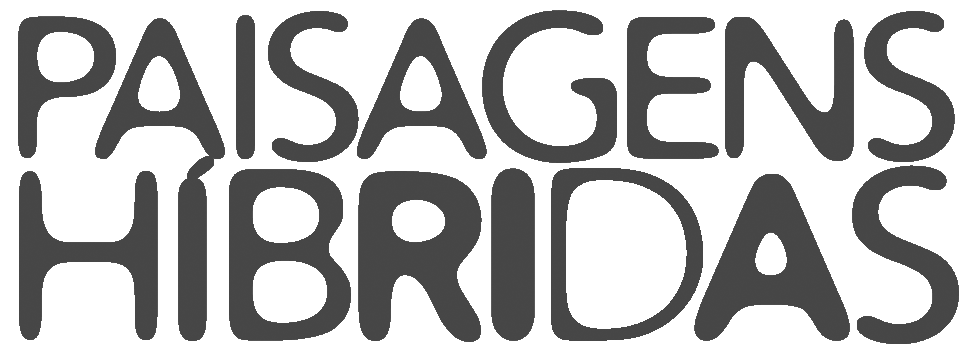Memórias do Futuro/Memories of the future Vídeo-Série

pay-per-view
fotografando as impressões que o mundo
deixa carimbadas no ar
enquanto passa, as imagens
agora giram junto com ele e parecem
uma forma de armar o sentido,
um quebra-cabeças delirante
de nem tantas peças e resultados infinitos, todos falsos, daí
porque você tenta se agarrar ao ar
quando o chão desaparece, mas
são toneladas de lata, vidro,
plástico e combustível alçados
aos céus, com ou sem
você
pay-per-view
photographing the impressions that the world
leaves stamped in the air
as it passes, the images
now spin along with it and they seem
a way of arming the sense,
a delusional puzzle
of not so many pieces and infinite results, all false, hence
because you try to hold on to the air
when the ground disappears, but
tons of tin, glass,
plastic and fuel are raised
to the heavens, with or without
you
Nuno Rau (Mecânica aplicada, Patuá, 2017) | Tradução | Ayssa Norek
Memórias do Futuro é um projeto que nasce do interesse em evidenciar a produção artística contemporânea a partir de Artistas ligados a campos distintos de atuação. A finalidade desse movimento é construir diálogos plurais entre a Arte, a Cultura, a Sociedade e o Patrimônio considerando as pautas alinhadas às discussões dos temas vinculados Webnar Internacional Novas Abordagens ao Patrimônio, em curso no mês de junho/2021.
A proposta está vinculada ao Globinar Novas Abordagens em Parimônio, a partir de uma parceria entre a Our We Heritage – OWH, a Universidade Federal do Rio de Janeiro através do Programa de Pós-Graduação Projeto e Patrimônio – MPPP-FAU/UFRJ, o
Programa de Pós-Graduação em Geografia | PPGG – IGEO/UFRJ e
Programa de Pós-Graduação Arquitetura e Urbanismo | PPGAU – FAU/USP, tendo ainda o suporte dos Grupos de Pesquisas Sistema de Espaços Livres – SEL-RJ-PROARQ-FAU/UFRJ e Paisagens Hibridas da Escola de Belas Artes- UFRJ.
Tendo como pretexto produzir “escutas” de artistas brasileiros como também criar (re)novados marcadores sobre o campo ampliado das artes, o projeto Memórias do Futuro, idealizado por Rubens de Andrade e produzido e dirigido em parceria com a Arquiteta e Urbanista Mônica Bahia Schlee, mais a Co-produção de Equipe Tre+co (Melanie Martins Barroso, Pedro Vitor Costa e Victória Michelini), teve a companhia de Luiz Eduardo Rayol (Direção de Arte), Gabriel Miranda (Direção de imagem e Montagem) e Giovanna Houri de Lima (Tradução).
Sobre memórias, futuros e a série
A proposta da Video-Série é debater e construir juntos e horizontalmente uma renovada abordagem sobre o tema do patrimônio. Para tanto, contamos com a visão e experiência de doze Artistas convidados para construir e desconstruir determinados cânones deixados pelo legado dos povos ancestrais assim como, (re)pensar as heranças patrimoniais material e imaterial que ocupam os cotidianos de nossa paisagem. Para quê? Construir pontes para renovados diálogos e outras possibilidades narrativas para as memórias do futuro de nosso povo e daqueles que venham a acessá-las.
Entre as distintas etapas do projeto, a primeira consiste na Vídeo-Série com doze episódios. São documentos visuais sensíveis e potentes que revelam o ambiente de trabalho de cada um desses artistas durante a pandemia expondo algumas camadas do que consiste a visão do seu universo artístico ante as questões propostas pela Webnário Novas Abordagens em Patrimônio. A vídeo-série será exibida durante as sessões do evento on-line entre os dias 07 e 25 de junho.
Memories of the Future is a project born from the interest in highlighting contemporary artistic production from Artists linked to different fields of activity. The purpose of this movement is to build plural dialogues between Art, Culture, Society and Heritage, considering the guidelines aligned with the discussions on themes related to Webnar Internacional New Approaches to Heritage, in progress in June/2021.
The proposal is linked to the Globinar New Approaches Heritage, based on a partnership between the Our We Heritage – OWH, the Federal University of Rio de Janeiro through the Graduate Program Project and Heritage – MPPP-FAU/UFRJ, the Graduate Program in Geography | PPGG – IGEO/UFRJ and Graduate Program in Architecture and Urbanism | PPGAU – FAU/USP, with the participation of the Free Spaces System Research Group – SEL-RJ-PROARQ-FAU/UFRJ and the Hybrid Landscapes Research Group of the School of Fine Arts – UFRJ.
With the pretext of producing “listenings” of Brazilian artists as well as creating (re)newed markers on the expanded field of arts, the project Memories of the Future, conceived by Rubens de Andrade and produced and directed in partnership with the architect and urbanist Mônica Bahia Schlee, plus Co-produced by the Tre+co Team (Melanie Martins Barroso, Pedro Vitor Costa and Victória Michelini), he had the company of Luiz Eduardo Rayol (Art Direction), Gabriel Miranda (Image and Editing Direction) and Giovanna Houri de Lima (Translation).
About memories, futures and the series
The Video-Series proposal is to debate and build together and horizontally a new approach to
the theme of heritage. For that, we count on the vision and experience of twelve invited Artists
to build and deconstruct certain canons left by the ancestors’ legacy, as well as (re)thinking the material and immaterial
heritage heritages that occupy
the daily life of our landscape. For what? Build bridges for
new dialogues and other narrative possibilities for the memories of the future of our people and those who come to access them.
Among the different stages of the project, the first consists of a video series with twelve episodes. They are sensitive and powerful visual documents that reveal the work environment of each of these artists during the pandemic, revealing some layers of what the vision of their artistic universe consists of in the face of questions proposed by Webnário Novas Abordagens em Património. The video series will be shown during the online event
sessions between the 7th and 25th of June.
Artistas/Artists
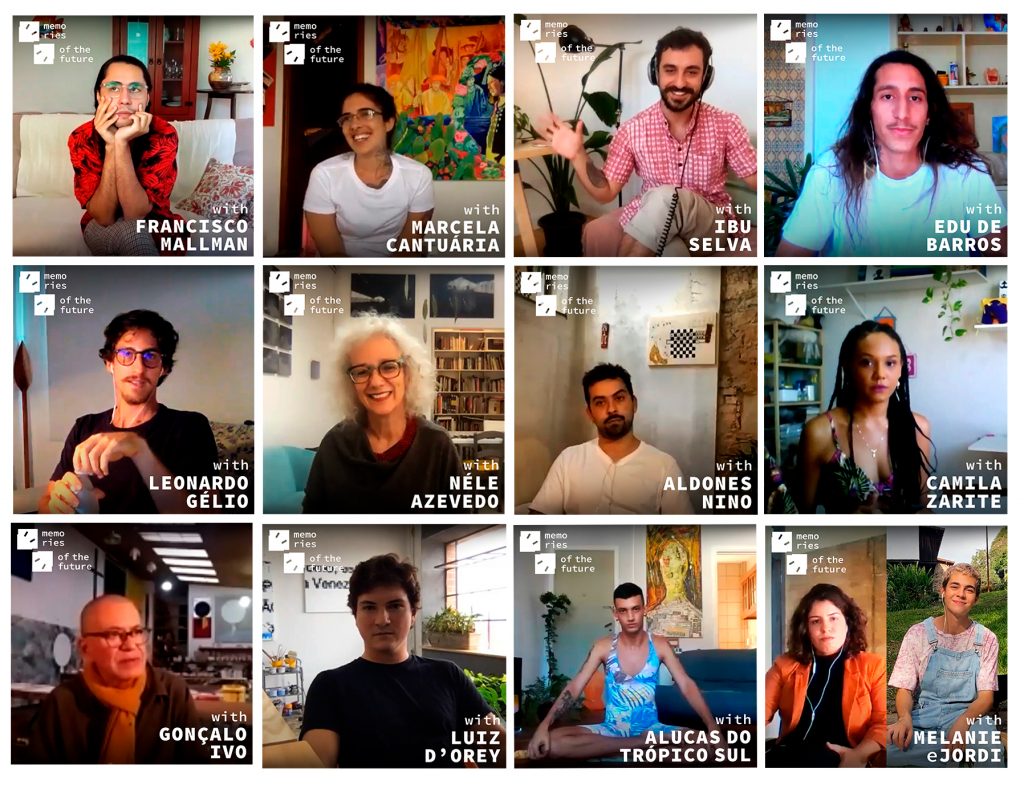
Episódios | Episode
EPISÓDIO I | Néle Azevedo
EPISÓDIO II | Ivo Gonçalo
EPISÓDIO III | Ibu Selva
EPISÓDIO IV | Leonardo Gélio
EPISÓDIO V | Francisco Mallmann
EPISÓDIO VI | Luiz D’orey
EPISÓDIO VII | Aldones Nino
EPISÓDIO VII | Camila Zirat
EPISÓDIO IX | Alucas do Trópico
EPISÓDIO IX | Marcela Cantuária
EPISÓDIO X | Marcela Cantuária
EPISÓDIO XI | Edu Barros
EPISÓDIO XII | Melanie Martins e Jordi Marchon
Bio + Obras/Bio + Works
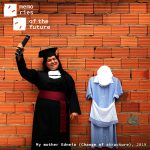 | Adones Nino | Atua como Historiador da Arte, Curador, Pesquisador, Redator e Artista Visual. Natural de São Paulo, Aldones alinha sua pesquisa a temas como; O pensamento decolonial, a arte da representação e os desígnios e domínios da paisagem. | Aldones works as an Art Historian, Curator, Researcher, Copywriter and Visual Artist. Born in São Paulo, Aldones aligns his research with topics such as; Decolonial thinking, the art of representation and the designs and domains of the landscape. |
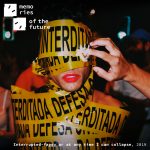 | Alucas do Trópico Sul | Historiador da Arte, Artista, DJ e Performer. Com 27 anos e natural de Ituiutaba, Minas Gerais, Alucas, apropria-se de ritmos e narrativas latino-americanas para o desenvolvimento de experiências e sensações sonoras. Experimentações musicais sobre o imaginário sul-americano. | Art Historian, Artist, DJ and Performer. Aged 27 and born in Ituiutaba, Minas Gerais, Alucas, he appropriates Latin American rhythms and narratives to develop experiences and sound sensations. Musical experiments on the South American imagination. |
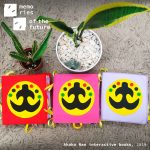 | Camila Zarite | Atriz, Artista Visual, Educadora, Assistente Social, Contadora de histórias, 31 anos e natural de Porto Alegre. Camila, pesquisa em sua marca Akokonan, a preservação dos símbolos e heranças africanas em práticas artísticas e de ensino, para a educação de base. | Actress, Visual Artist, Educator, Social Worker, Storyteller, 31 years old and born in Porto Alegre. Camila, research on her brand Akokonan, the preservation of African symbols and heritages in artistic and teaching practices, for basic education. |
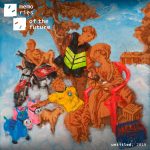 | Edu de Barros | Artista Visual, profeta, 28 anos e natural do Rio de Janeiro. Edu, trabalha em suas obras, uma formação de liturgia sagrada dos tempos atuais, modelada pela presença de sinais bíblicos. Utiliza também elementos de insurgência cultural das favelas e objetos e ações da vida cotidiana para suas obras, ressaltando a importância de repensar a estética brasileira fruto da colonização hegemônica. | Visual Artist, prophet, 28 years old and born in Río de Janeiro. Edu, works in his works a formation of the sacred liturgy of the present times, modeled by the presence of biblical signs. He also uses elements of cultural insurgency from the favelas and objects and actions from everyday life for his works, emphasizing the importance of rethinking Brazilian aesthetics as a result of hegemonic colonization. |
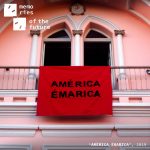 | Francisco Mallmann | Atua na intersecção entre poesia, dramaturgia, performance, artes visuais e crítica de arte. Natural de Curitiba, Francisco aborda temas como a violência histórica sofrida pela América Latina, o colonialismo, o racismo e a homofobia. Utiliza a palavra como ferramenta de existência, resistência do corpo e resgate da memória latino americana.| It works at the intersection of poetry, dramaturgy, performance, visual arts and art criticism. Born in Curitiba, Francisco tackles themes such as the historical violence suffered by Latin America, colonialism, racism and homophobia. He uses the word as a tool for existence, body resistance and rescue of Latin American memory. |
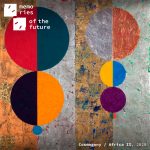 | Gonçalo Ivo | Pintor, aquarelista, desenhista, ilustrador, gravador, arquiteto e urbanista, 63 anos, natural do Rio de Janeiro e filho do poeta Ledo Ivo. Gonçalo, explora a construção de uma linguagem associada à tradição da pintura. O abstracionismo e o geometrismo encontrados em suas obras trazem a sensibilidade poética como forma de explorar os traços líricos de seu processo artístico. | Painter, watercolorist, draughtsman, illustrator, engraver, architect and urban planner, 63 years old, born in Rio de Janeiro and son of poet Ledo Ivo. Gonçalo, explores the construction of a language associated with the tradition of painting. The abstraction and geometricism found in his works bring poetic sensitivity as a way to explore the lyrical traits of his artistic process. |
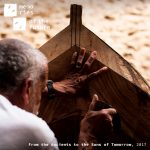 | Leonardo Gélio | Diretor de cinema, fotógrafo e natural do Rio de Janeiro. Leonardo, trabalha no campo do audiovisual explorando questões socioambientais que tangem questões de comunidades tradicionais. Em seu filme Dos Antigos aos Filhos do Amanhã, trabalha a resistência do saber regional/popular, resgatando tradições e práticas da cultura caiçara. | Film director, photographer and native of Rio de Janeiro. Leonardo works in the audiovisual field exploring socio-environmental issues that touch on issues of traditional communities. In his film From the Old to the Children of Tomorrow, he works on the resistance of regional/popular knowledge, rescuing traditions and practices of the caiçara culture. |
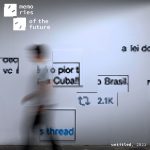 | Luiz D’orey | Artista plástico, pintor, escultor, 28 anos e natural do Rio de Janeiro. Luiz d’Orey examina a circulação da informação e seus sistemas no contexto urbano e digital. Sua prática se constrói a partir da pintura e seus possíveis desdobramentos. Investiga a circulação da informação no espaço físico e virtual. | Artist, painter, sculptor, 28 years old and born in Rio de Janeiro. Luiz d’Orey examines the circulation of information and its systems in the urban and digital context. His practice is built from painting and its possible consequences. It investigates the circulation of information in physical and virtual space. |
 | Marcela Cantuária | Pintora, Artista Visual, 30 anos e natural do Rio de Janeiro. Marcela, trabalha com pinturas figurativas que remontam e reinterpretam o imaginário de uma iconografia latino-americana. Trabalha com uma expressão de resgate histórico e político, misturando as relações de presente, passado e futuro e usando a pintura como uma ferramenta pedagógica. | Painter, Visual Artist, 30 years old and born in Rio de Janeiro. Marcela works with figurative paintings that reassemble and reinterpret the imagery of a Latin American iconography. She works with an expression of historical and political rescue, mixing the relationships of present, past and future and using painting as a pedagogical tool. |
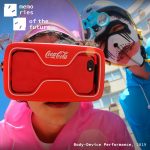 | Melanie Martins | Jordi Marchon em>Melanie, arquiteta e urbanista, atriz, artista, 26 anos, Carioca. Jordi, arquiteto e urbanista, ator, performer, artista visual, 26 anos Carioca. Artistas trabalham juntos na performance “Corpo-dispositivo” e investigam temas como cidade, tecnologia e corpo, a fim de expandir o campo ampliado da arquitetura, utilizando a performance e o audiovisual como ferramentas para traçar novas perspectivas sobre o espaço urbano. | Melanie, architect and urban planner, actress, artist, 26 years old, Carioca. Jordi, architect and urban planner, actor, performer, visual artist, 26 years old and born in Rio de Janeiro. The artists work together in the performance “Body-device” and investigate themes such as the city, technology and the body, in order to expand the expanded field of architecture, using performance and the audiovisual as tools to draw new perspectives on urban space. |
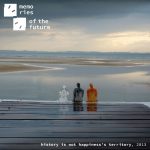 | Néle Azevedo | Artista Visual, Fotógrafa, 71 anos e natural de Minas Gerais. Néle, trabalha a desconstrução dos cânones do patrimônio, por meio de intervenções urbanas efêmeras, tencionando discussões político-poéticas sobre memória, convívio, espaço público, troca e patrimônio. | Visual Artist, Photographer, 71 years old and born in Minas Gerais. In it, she works on the deconstruction of the canons of heritage, through ephemeral urban interventions, bringing together political-poetic discussions about memory, conviviality, public space, exchange and heritage. |
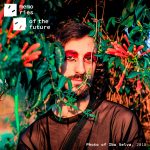 | Rafael Johnson -Ibu Selva | Produtor musical, dj e natural de São Paulo. Rafael Johnson produz um diálogo utilizando referências tímbricas, rítmicas e analógicas das músicas, trazendo um sentimento coletivo global de pertencimento e unidade da sociedade. Apostando na simbiose entre ancestral e futuro, arte da natureza e tecnologia, suas composições tentam abrir margem para um rompimento das fronteiras. | Music producer, dj and born in São Paulo. Rafael Johnson produces a dialogue using timbral, rhythmic and analogical references to the songs, bringing a global collective feeling of belonging and unity in society. Betting on the symbiosis between ancestral and future, art of nature and technology, his compositions try to make room for a breach of borders. |
Memórias do Futuro – Marca/Memories of the Future – Brand
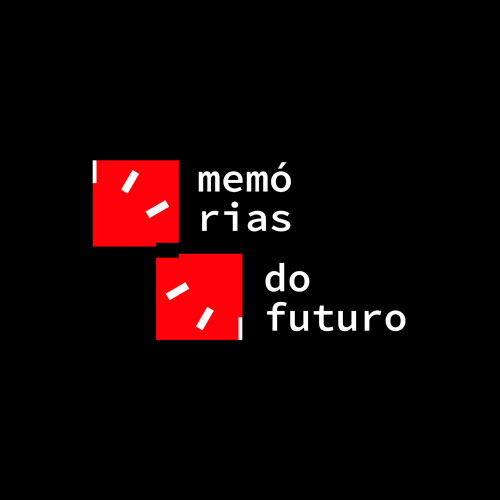
Passado – Presente – Futuro
Futuro – Presente – Passado
Presente – Futuro – Passado
T E M P O
A dimensão temporal frequentemente ganha representações cujas formas alinham-se a movimentos circulares. A ideia de ciclos e sua aproximação à geometria circular, captura nossos sentidos há tempos. Contraditoriamente, ela também conduz-nos para convenções que sugerem interpretações onde o tempo manifesta-se através de referências de uma ordem “linear” de mundo. Exemplo desse estatuto que nos é oferecido são as formas que os marcadores do tempo humano adquiriam por meio de dispositivos mecanizados que cadenciam o passar das horas, minutos e segundos: os relógios.
Mas há mais nesta arquitetura de formas e movimentos. Os ponteiros, por exemplo, insinuam inúmeras possibilidades interpretativas. Eles possuem um circuito, percorrem um território onde habitam as representações das horas. Eles seguem trajetórias e pontuam sequências numéricas que, na sua abstração matemática, não oferecem limitações para nos localizarmos seja no tempo passado, presente ou aquele que está por vir. Diante de tal premissa, talvez seja mais simples identificar quantas são as camadas que nos envolvem entre o ontem atrás e o amanhã à frente.
Pensar em formas que traduzem as Memórias do Futuro, surge como um exercício visual onde se produziu (re)alinhamentos formais. Onde o tempo da contemporaneidade, com seus fluxos cada vez mais líquidos e velozes, ganha potência a partir de lugares, de escutas e de temporalidades que atravessam a todos. Portanto, a forma-relógio, que há séculos sequestrou nossos sentidos de interpretar o tempo que passa, aqui se traduz por uma geometria que subverte a circularidade, que celebra ideários de dias futuros, dias onde, talvez, não seja fácil e simples discernir o antes ou o depois.
Nesse sentido, a direção assumida na marca do Memórias do Futuro quer traduzir a desconstrução da forma-relógio e possibilitar à retina alheia, um desafio visual onde os ponteiros e os “marcadores das horas” ora se fundem, ora se alternam. Separam-se em quadrantes, alinham-se em movimentos cinéticos, cibernéticos, deixando, assim, O sinal de que o tempo de memórias futuras está por vir sobre outros signos que demandam pensar “ Novas Abordagens”. Para olhar as vivências futuras é necessário pensar uma quebra, uma mudança de paradigma, uma forma de entender o que escolhemos levar adiante e o que queremos acolher como alternativa de vida. Essa quebra é a essência traduzida graficamente no logo.
Past – present – Future
Future – Present – Past
Present – Future – Past
T I M E
The temporal dimension often gains representations whose
shapes align with circular movements. The idea of cycles
and their approximation to circular geometry has captured our senses for a long time. Contradictory, it also leads us to conventions
that suggest interpretations
where time manifests itself
through references of a “linear” world order. An example of
this status that is offered to us are the forms that human time markers acquired through mechanized devices that pace the
passing of hours, minutes and seconds: clocks.
But there is more to this architecture of forms and movements. Pointers, for example, hint at numerous interpretive possibilities. They have a circuit, they traverse a territory where representations of the hours inhabit. They follow trajectories and punctuate numerical sequences that, in their mathematical abstraction, offer no limitations for locating ourselves, whether in past, present or time to come. Given this premise, it may be simpler to identify how many
layers surround us between yesterday
behind and tomorrow
ahead.
Thinking in ways that translate
the Memories of the Future, appears as a visual exercise where formal (re)alignments were produced.
Where contemporary time, with its increasingly liquid and fast flows, gains power from places, listening and temporalities that permeate everyone. Therefore, the clock-form, which for centuries hijacked our senses of interpreting time that passes, here translates into a geometry that subverts circularity, which celebrates
ideas of future days, days where perhaps it is not easy and simple to discern the before or after.
In this sense, the direction assumed in the brand of Memórias do Futuro intends to translate the deconstruction of the clock-form and allow the other person’s retina, a visual challenge where the hands and the “time markers” sometimes merge, sometimes alternate. They separate into quadrants, align themselves in kinetic, cybernetic movements, thus leaving the sign that the time for future memories is about to come over other signs that demand thinking about “New Approaches”. To look at future experiences, it is necessary to think about a break, a paradigm shift, a way of understanding what we have chosen to take forward and what we want to embrace as an lternative in life. This break is the essence graphically translated into the logo.
Luiz Eduardo Rayol e Rubens de Andrade
Equipe/Team
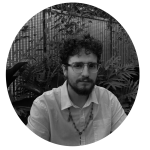 | Luiz Eduardo Rayol Artista visual e graduado em Desenho Industrial pela Pontifícia Universidade Católica do Rio de Janeiro (2020). Cursou Introdução à pintura na Escola de Artes Visuais do Parque Lage. Atualmente, é representado pelo Escritório de Arte Ana Beatriz Britto e Isabela Burlamaqui. / Visual artist and graduated in Industrial Design at the Pontifical Catholic University of Rio de Janeiro (2020). He studied Introduction to Painting at the Parque Lage School of Visual Arts. He is currently represented by the Ana Beatriz Britto and Isabela Burlamaqui Art Office. |
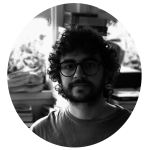 | Gabriel Miranda Roteirista e escritor, graduado em Comunicação Social - Cinema pela Pontifícia Universidade Católica do Rio de Janeiro (2019). Escreveu e dirigiu videoclipes e foi assistente de produção no documentário "Barretão", dirigido por Marcelo Santiago.Atualmente, está em processo de montagem do seu primeiro curta-metragem./Screenwriter and writer, graduated in Social Communication - Cinema at the Pontifical Catholic University of Rio de Janeiro (2019). He wrote and directed video clips and was assistant producer on the documentary "Barretão", directed by Marcelo Santiago. He is currently in the process of editing his first short film. |
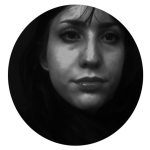 | Giovanna Houri de Lima Graduanda de História da Arte | EBA/UFRJ, Tradutora /Art History Undergraduate | EBA/UFRJ, Translator/Art History Undergraduate | EBA/UFRJ, Translator |
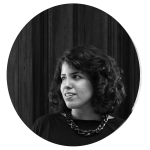 | Melanie Martins Arquiteta e urbanista pela Faculdade de Arquitetura e Urbanismo da Universidade Federal do Rio de Janeiro (2020). Premiada pela plataforma Archdaily por seu trabalho final de graduação “corpo-dispositivo”, com o qual explora a performance dentro do campo da arquitetura. Possui experiência profissional no escritório Milazzo Arquitetos Associados. É co-fundadora do Tre+Co, laboratório de pesquisa e práticas interdisciplinares em arquitetura./Architect and urban planner from the Faculty of Architecture and Urbanism of the Federal University of Rio de Janeiro (2020). Awarded by the Archdaily platform for her final graduation work “body-device”, with which she explores performance within the field of architecture. He has professional experience at Milazzo Arquitetos Associados. She is co-founder of Tre+Co, a research laboratory and interdisciplinary practices in architecture. |
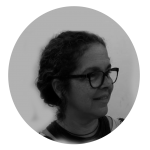 | Mônica Bahia Schlee Holds a PhD in Architecture from the Federal University of Rio de Janeiro (2011), a Master in Landscape Architecture from Pennsylvania State University (2002), when she received the Creative Achievement in Landscape Architecture Award - PSU (2000) and ASLA - American Association of Landscape Architects Merit Award for Excellence in the Study of Landscape Architecture (2000), and a Master in Urban Environmental Structures from the University of São Paulo (1999). She worked as a landscape architect and urban planner of Rio de Janeiro City Hall from 1992 to 2020, as part of the Macro Urban Planning sector since 2008, and in charge of the operational coordination of the Rio de Janeiro Master Plan revision process from 2018 to 2020. |
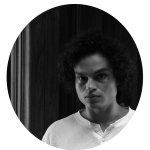 | Pedro Vitor Costa Arquiteto e urbanista pela Faculdade de Arquitetura e Urbanismo da Universidade Federal do Rio de Janeiro e mestrando pelo programa de Pós Graduação em Urbanismo na FAU-UFRJ. Premiado pela plataforma Archdaily por seu trabalho final de graduação “A Doméstica de Magé: Uma arquitetura em 8 atos” em 2021.Faz parte do grupo de pesquisa CURL (Cultural and Urban Resistance Lab) em parceria com a TU Berlim e é co-fundador do Tre+Co, laboratório de pesquisa e práticas interdisciplinares em arquitetura./Architect and urban planner by the Faculty of Architecture and Urbanism of the Federal University of Rio de Janeiro and master's degree in the Postgraduate program in Urbanism at FAU-UFRJ. Awarded by the Archdaily platform for his final graduation work “The Domestic of Magé: An architecture in 8 acts” in 2021. He is part of the research group CURL (Cultural and Urban Resistance Lab) in partnership with TU Berlin and is co-founder from Tre+Co, a laboratory for research and interdisciplinary practices in architecture. |
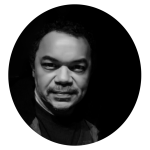 | Rubens de Andrade Docente da Escola de Belas Artes (História da Arte e Paisagismo) e Programa de Pós-Graduação em Arquitetura - ProArq/UFRJ, Paisagista (EBA/UFRJ), Mestre em Arquitetura (ProArq –FAU/UFRJ). Doutor em Planejamento Urbano e Regional pelo (Programa de Pós-Graduação de Planejamento Urbano e Regional-IPPUR/UFRJ). Líder no CNPq do Grupo de Pesquisas Paisagens Híbridas – GPPH-EBA/UFRJ./Professor at the School of Fine Arts (History of Art and Landscape) and Graduate Program in Architecture - ProArq/UFRJ, Landscape Designer (EBA/UFRJ), Master in Architecture (ProArq –FAU/UFRJ). PhD in Urban and Regional Planning from (Postgraduate Program in Urban and Regional Planning-IPPUR/UFRJ). Leader at CNPq of the Hybrid Landscapes Research Group – GPPH-EBA/UFRJ. |
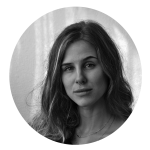 | Victória Michelin Arquiteta e urbanista pela Faculdade de Arquitetura e Urbanismo da Universidade Federal do Rio de Janeiro (2020). Premiada pela plataforma Archdaily por seu trabalho final de graduação “Arquitetura do ar: o vazio como suporte do devir”em 2021. Atualmente é membro do grupo de pesquisa CURL (Cultural and Urban Resistance Lab) em parceria com a TU Berlim e do grupo de pesquisa UrCA (Urbanismo, Crítica e Arquitetura), do PROURB/FAU-UFRJ, participando ativamente do projeto de extensão Arquitetura Comum. É co-fundadora do Tre+Co, laboratório de pesquisa e práticas interdisciplinares em arquitetura./Architect and urban planner from the Faculty of Architecture and Urbanism at the Federal University of Rio de Janeiro (2020). Awarded by the Archdaily platform for her final graduation work “Architecture of the air: the void as a support for becoming” in 2021. She is currently a member of the research group CURL (Cultural and Urban Resistance Lab) in partnership with TU Berlin and the group of UrCA research (Urbanism, Criticism and Architecture), from PROURB/FAU-UFRJ, actively participating in the joint Architecture extension project. She is co-founder of Tre+Co, a research laboratory and interdisciplinary practices in architecture. |
Créditos/Credits
Projeto Memórias do Futuro | Vídeo-série
Concepção do projeto
Rubens de Andrade
Coordenação e desenvolvimento
Rubens de Andrade
Melanie Martins
Victória Michelini
Pedro Vitor Costa
Direção/Produção
Rubens de Andrade
Tre+co
Luiz Eduardo Rayol
Co-Produção
Mônica Bahia Schlee
Rubens de Andrade
Direção de arte
Luiz Eduardo Rayol
Direção de Imagem e montagem
Gabriel Miranda
Tradução
Giovanna Houri de Lima
Revisora
Mônica Bahia Schlee


Professor Associado da Universidade Federal do Rio de Janeiro. Docente da Escola de Belas Artes (História da Arte e Paisagismo) e do Programa de Pós-Graduação em Arquitetura – ProArq/UFRJ, Paisagista (EBA/UFRJ), Mestre em Arquitetura (ProArq –FAU/UFRJ) e Doutor em Planejamento Urbano e Regional pelo (Programa de Pós-Graduação de Planejamento Urbano e Regional-IPPUR/UFRJ). Líder no CNPq do Grupo de Pesquisas Paisagens Híbridas – GPPH-EBA/UFRJ.
Publicações Paisagens Híbridas
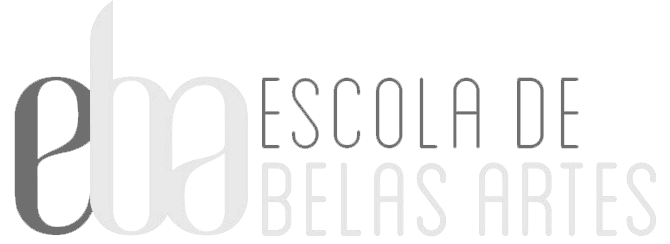

Toda obra individual ou coletiva publicado neste web site pertence ao seu autor ou ao Grupo de Pesquisa Paisagens Hibridas. © 2014 Grupo de Pesquisa Paisagens Hibridas - EBA - UFRJ
